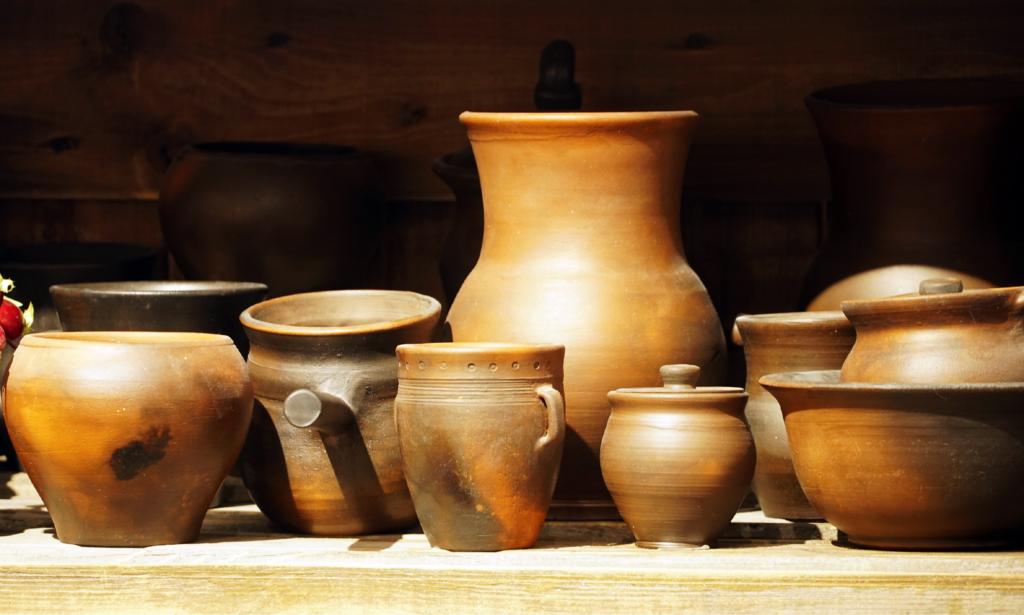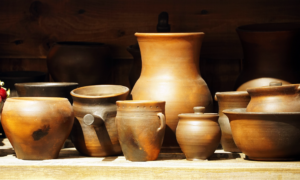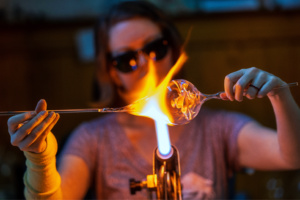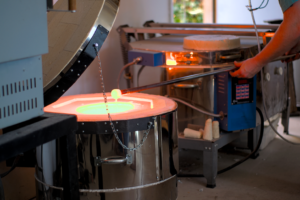We never stop learning. Even if we have years developing some technique, if we have gathered a lot of knowledge of different aspects of some topic, discipline or matter, there is always something we are missing. The world, life and nature are always changing, and technologies, materials, and perspectives are with them too. Art is not the exception, but, yes, it is the constant. Such is the case with ancient pottery art.
But how did it all start?
Prehistoric pottery
When we talk about prehistoric times a bunch of images could come to mind. We imagine humans gathering and organizing to hunt and recollect vegetables and fruits. We also could think of humans reuniting around fires and sleeping in caves. Usually, we do not imagine humans making pottery, but this activity embraces how ancient humans played with the earth.
Pottery is actually the first synthetic material ever made by humans, in the sense that every other material manipulated by humans was never subjected to any physical or chemical process in order to change or preserve its desired state. Pottery, then, refers to objects crafted with clay that go through a molding, drying and either firing or baking process to fix their form.
You have probably heard, read or discussed about human discovery of fire. This subject matter interests both experts and researchers such as historians, biologists, anthropologists, and other scientists, and both non specialists, since knowledge of how humans discovered fire, or, more precisely, managed the controlled use of fire, allows us to understand much of mankind´s behavior and evolutionary process.
This too has to do with the evolution of art itself. In fact, it has to do with, maybe, everything that implies human evolution. In the matter of physiology, cultural structuration, survival and life span, development of the brain mass and its different functionalities, and of course mistic, religious, artistic and esoteric practices, which in many cases led to the first approaches to science and the realization and transcendence of arts.
Fire is not to be taken for granted. Fire allows us to produce energy in the form of light and heat, we can cook plants, animals, roots, fruits and many other edible things you could imagine. We can clean areas where we want to plant and keep predator animals away, as well as function as a social element, serving as a meeting place to meditate and bring the tribe together.
Fire allowed ages to evolve parallel to us, as we forged, treated, and modified stone, metal, glass, and, of course, clay. Clay is actually the first material humans transmuted into another material, that is, pottery. Without the controlled use of fire humans would probably never have gotten out of the hunting and gathering practices.
Humans around the world made little by little progress on managing the controlled use of fire. First, they used fire in opportunistic ways: picking it up from natural occurrences, like lightning strikes, meteor impacts or lighted gas leaks to the atmosphere. Then, they probably learned how to maintain fire with animal manure or greases, as well as vegetal resins or oils.
All the way from the Paleolithic, Neolithic, to Stone, Bronze and Iron ages there have been many developments in methods of applying fire to many kinds of things, and so fire became an everyday tool people needed and used with ease.
With mastery of knowledge about ways to preserve fire, it was now present in almost every city and village, and wars and combats were not the exception. But, on the other hand, the preservation and control of fire allowed artisans to explore materials in such a way that art exploded.
Main types of ancient pottery
The three main types of ancient pottery are naturally related to one another, and we should consider that many categorizations make concrete differences depending on various factors, like the clay used to craft them, the temperature required to fire them and even the historic and geographic moment where the pottery type of technique and material was developed.
Historically, around the world, the first ever developed pottery type was earthenware, then stoneware and finally porcelain.
- Earthenware
If we are talking about ancient pottery the dialog will naturally lead us to talk about earthenware. Earthenware is the oldest and less complex type of pottery, and it also is the softest, since it is fired at the relatively lowest temperatures, usually between 1830 and 2200 °F (1000 and 1200 °C).
- Stoneware
Stoneware is denser and is typically fired at higher temperatures than stoneware, between 2000 and 2200 °F (1100 and 1200 °C). Stoneware is usually coated with a glaze powdered glass that is related to the known called frit, and that creates a vitreous, impermeable surface.
- Porcelain
Porcelain is fired at higher temperatures, between 2200 and 2550 °F (1200 and 1400 °C), that creates its strength, translucence, and impermeability. It has a white characteristic color that combines very well with glazes and paint.
Ancient firing methods
As we saw, practices on pottery, ceramics, glass, metal, and even gastronomy were mastered as they were expanded. Firing methods for these arts were improved, specialized and refined. There is of course evidence of ancient traditional kilns constructed and used all around the world. Pottery firing materials and methods are, by far, an endless subject of study.
Historically, pottery kilns represent an art themselves, since many traditions carefully and beautifully constructed and preserved them. Naturally, the first attempt to fire any piece of clay did not take place, by far, like in a modern gas or electric kiln.
How were kilns made before?
People constructed kilns with stones, making perforations on the ground, near fires. Then, when materials were more available and processes were standardized, they made kilns with pottery itself, or other heat resistant materials.
There are so many firing methods we will make things easy for you, and we will focus on the easiest and now most popular of them: electric pottery kilns.
Pottery Kilns as a firing method
Modern pottery kilns are tools that specialize in achieving the right temperatures so that pottery pieces can harden enough and maintain their shape and quality. You can find a variety of sizes, features, and prices. They offer temperature and firing time precision and they are very easy to operate.
In the blink of an eye, with a pottery kiln you can fire your pottery art masterpieces at home.






